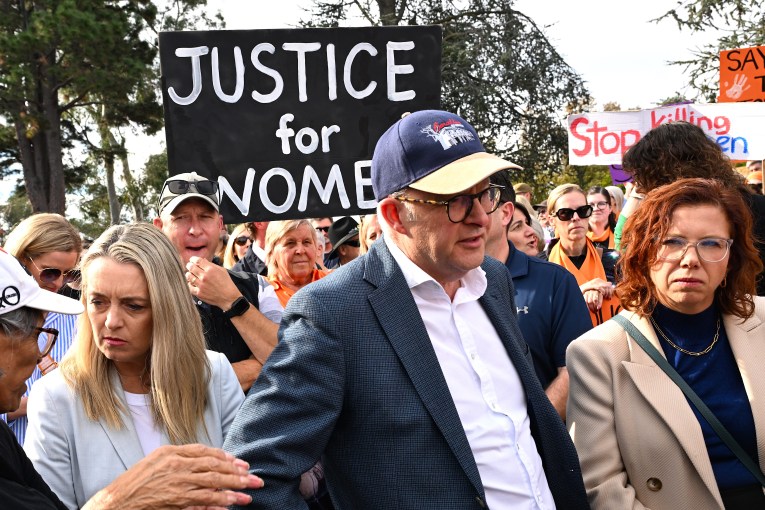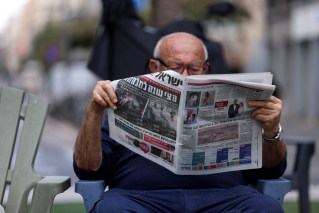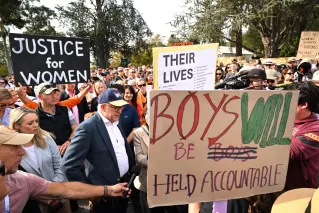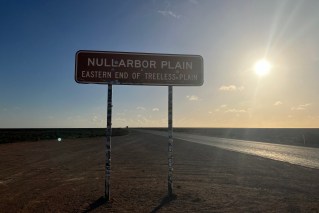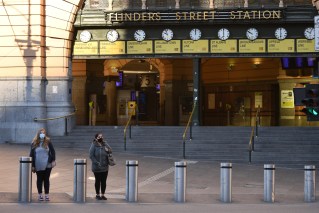Albanese and the Yes campaign should have heeded Sun-Tzu’s warnings
The Yes referendum campaign might have been lost as long ago as last Christmas, writes Dennis Atkins. However, a Chinese military theorist writing almost three millennia ago could have warned our Prime Minister of the mistake ahead.

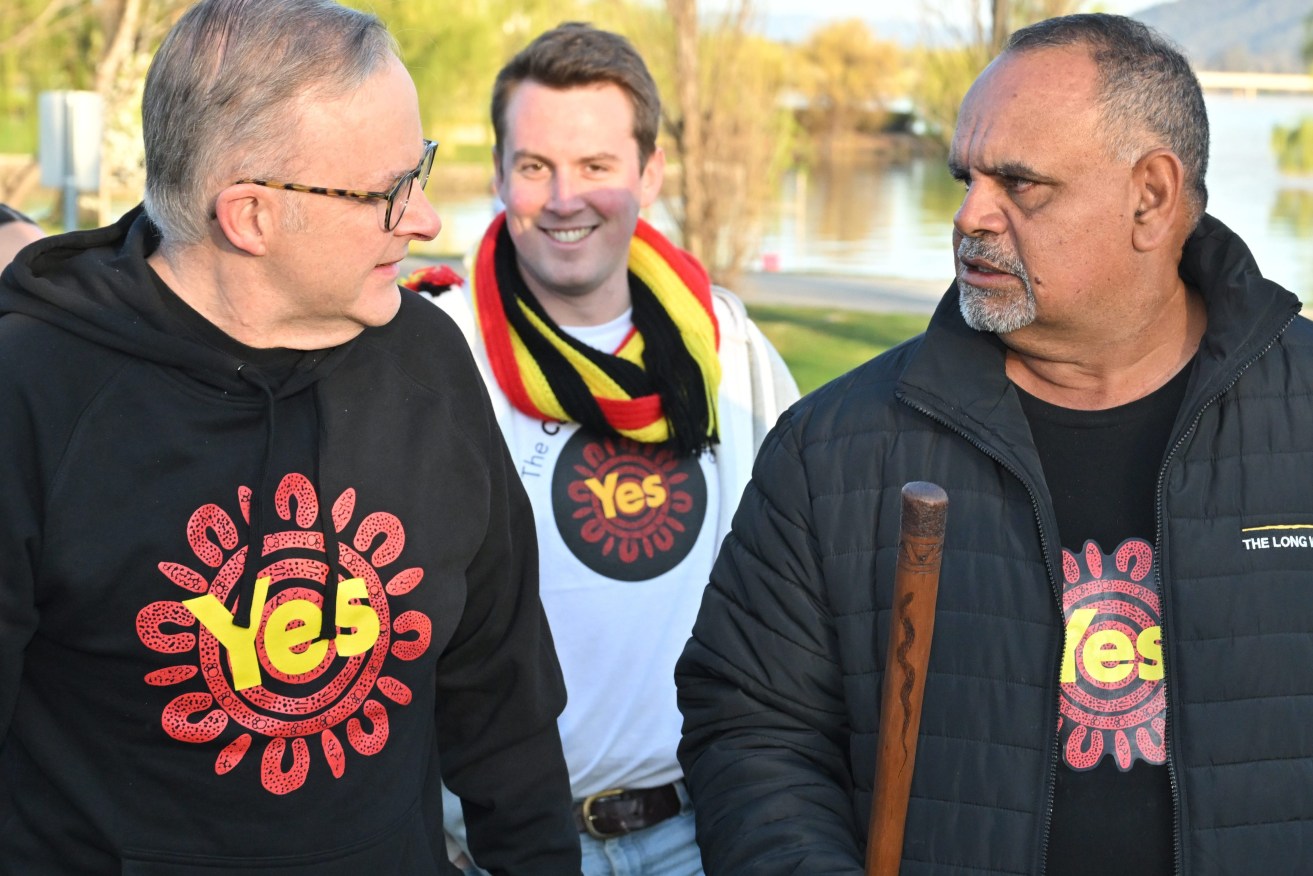
Prime Minister Anthony Albanese and former AFL player Michael Long walk to Parliament House at the completion of a 20 day long walk for the Yes campaign, in Canberra, (AAP Image/Mick Tsikas)
Anyone following the trajectory of the No vote for an Indigenous People’s Voice to Parliament should not be surprised by anything in the latest round of polling on the imminent referendum.
In fact, there’s been nothing to surprise those watching closely since the start of the year – and the trend that’s been apparent was on the cards in the last months of 2022.
According to aggregated polling analysis by various reliable suspects – Tasmania’s Kevin Bonham, the ABC’s data specialist Casey Briggs and The Guardian’s Essential survey – the Yes vote has been in steady decline since the last summer break.
The twig snapped in early July when support for the constitutional change slipped below 50 percent. It now struggles to get even close to 40 percent.
Here’s what The Guardian said last week about polling by its source, Essential: “Support for the voice has dropped by about 21 percentage points nationally over the past year.
“This is similar to the declines in South Australia, New South Wales and Queensland. Victoria has seen a smaller decline – about 18 points – while in Western Australia the decline is closer to 25 points.
“The declines among 35-45 year-olds, and those over 55 and supporters of the Coalition or independents or minor parties is about 20 percentage points.”
This analysis can find scant good news for Yes, reporting support from backers of the Greens Party and voters aged 18-34 remained steady.
The latest poll at the weekend, by Victorian-based RedBridge looking at results from a survey of 1500 people recorded over nine days from September 13, confirmed the trend, with 38 percent saying Yes and 62 percent opting for No on a forced answer basis.
Today’s Newspoll serves to harden the bad news. Its score for the Yes campaign is just 36 percent, not far above a mere one in three voters.
RedBridge’s polling also dipped into what’s driving voters and it’s a story of why things are so difficult for the Yes campaign.
The problem for Yes is this referendum is barely on the radar as an issue for voters consumed by economic worries – cost of living, housing affordability, the economy generally, jobs and wages.
RedBridge had more than nine in 10 voters more focussed on these top-line issues (dominating the five most important concerns) while consideration for the voice rates as being of any importance for barely just 15 in 100 people.
RedBridge’s Kos Samaras says the Voice Yes campaign is up against it because of these economic headwinds: “Voice is battling up against the biggest economic event since the early 1990s recession. It has little do with the No campaign.”
This is true and it might be it was always going to be just such a struggle since Anthony Albanese put the issue at the top of his “to do” list on election night in May last year.
Hindsight might say relegating the Voice referendum to a later date would have been wiser, avoiding the rancorous debate of the last 16 months and what looks like a crushing defeat.
Historical analysis might have also suggested holding a referendum with the next election – due in 2025 – would increase the chances of success. However, hindsight doesn’t get to vote. File it under missed opportunity.
The fate of this referendum might have been sealed over the summer of 2022/23 when the senior ranks of the Albanese Government went on an extended beach break. They doubtless felt they had earned it – the election had been won against the odds and a solid block of Labor’s agenda was moved to the “delivered” column.
However, political mice are forever on the lookout for tasty cheese morsels and relatively new Opposition leader Peter Dutton is a canny enough to understand the game’s basic rules.
He might not be a big vision guy – beyond his Suburban Everyman “capitalism works” – but he’s worked the back blocks of the hardest school in Australian conservative politics, the Queensland Liberal National Party, since he stood for state parliament on a foolhardy tilt for office at the 1989 Labor landslide.
From the start, Dutton wasn’t going to spend a day in his new job wondering. Everyone was saying he didn’t have a chance of resurrecting the national coalition after the Scott Morrison disaster but he was up for a fight, any fight.
So while Labor napped, Dutton sowed seeds of doubt about the voice without revealing his hand – a hand that was always going to have No written on it.
“More detail” was a relentless refrain and Labor failed to meet the challenge except with long-winded, vague, “look at the website” blather.
The military stratagem behind Dutton’s drive can be found in the pages from the greatest of political strategy primers, The Art of War by Hun Dynasty Chinese military general Sun-Tzu.
One paragraph explains how Dutton gathered an early advantage over his adversary Albanese: “In general, whoever occupies the battleground first and awaits the enemy will be at ease; whoever occupies the battleground afterward and must race to the conflict will be fatigued. The one who excels at warfare compels men and is not compelled by other men.”
For months after Albanese’s wasted summer, Dutton played rope-a-dope in and out of parliament before turning the campaign into a full-blooded engagement after the April Aston by-election.
What followed has been classic chaos theory, throwing out every dead cat in the bag of bad faith and watching the Yes campaign and Albanese’s Government scramble to work out how and where, or whether, to mount a response.
What Yes campaigners cheered as mangled messaging in the No camp was just more mess – a cacophony of contradictions and confusion designed to keep the other side in a state of swivel headed uncertainty about what was real and what wasn’t, where to look and what to answer and what to leave.
Again, these strategies are covered by Su-Ttzu in his passages on the nine configurations of battle, two of which describe how confusion is a deliberate way to put your enemy just where you want them, providing a final opportunity for “elite troops and detached units” to attack the rear flank of the opponents.
Given Sun-Tzu wrote his strategies about 2700 or so years ago, leading you to think present day political practitioners would understand the central points he makes.
The old Chinese thinker, by the way, never refers to kicking with the wind. The Yes campaign has got a lot of wind but they have little idea which way it is blowing.
